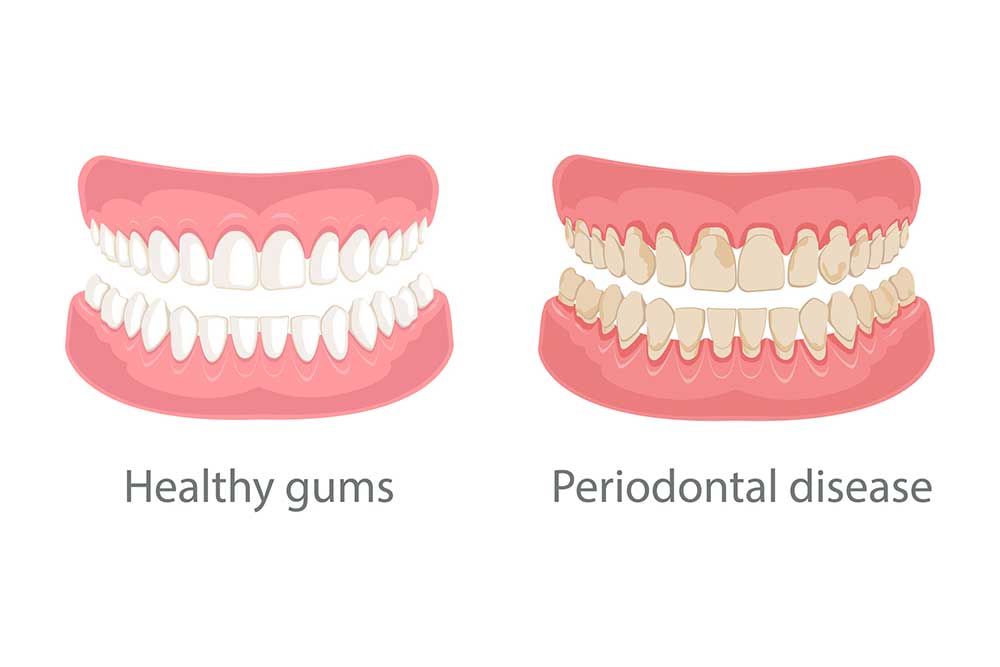Osseous Surgery
Fairbanks, AK

Osseous surgery, often referred to as periodontal osseous surgery, is a dental procedure designed to address advanced gum disease and maintain optimal oral health. This surgical intervention becomes necessary when non-surgical treatments such as scaling and root planing prove insufficient in managing periodontal conditions.
What is Osseous Surgery?
Osseous surgery is a surgical procedure performed by periodontists to treat advanced stages of gum disease, also known as periodontitis. Gum disease occurs when bacterial infection and inflammation extend deep into the supporting structures of the teeth, including the bone.
Periodontal osseous surgery aims to restore the health of these structures by eliminating diseased tissue and promoting the regeneration of healthy bone.
The Purpose of Osseous Surgery
Gum disease, if left untreated, can form pockets between the teeth and gums, fostering the growth of harmful bacteria. These pockets can deepen over time, causing the destruction of bone and connective tissue that support the teeth. Osseous surgery becomes necessary to address the following issues:
Pocket Reduction
Due to advanced gum disease, osseous surgery aims to reduce the depth of pockets that form between the teeth and gums. By eliminating diseased tissue and promoting a cleaner, healthier environment, the surgery helps prevent further bacterial growth.Bone Regeneration
The procedure involves reshaping and smoothing the damaged bone to facilitate the regeneration of healthy bone tissue. This is crucial for restoring stability to the teeth and preventing tooth loss.Enhanced Periodontal Health
Osseous surgery contributes to improved periodontal health by eliminating the source of infection and promoting tissue regeneration. This enhances the overall integrity of the gum and bone structures supporting the teeth.The Periodontal Osseous Surgery Process
Here is what you can expect when undergoing periodontal osseous surgery: healthy bone tissue. This is crucial for restoring stability to the teeth and preventing tooth loss.
Comprehensive Examination
Before recommending osseous surgery, our periodontist will thoroughly examine your oral health. This may involve X-rays and other diagnostic tools to assess the extent of gum disease and bone loss.Local Anesthesia
The surgical procedure begins with the administration of local anesthesia to ensure the patient's comfort throughout the process. In some cases, sedation options may be considered for individuals with dental anxiety or extensive treatment needs.Accessing and Cleaning
The periodontist accesses the affected areas through small incisions in the gums. Diseased tissue is carefully removed, and the root surfaces of the teeth are thoroughly cleaned to eliminate bacterial deposits.Reshaping Bone
If bone irregularities are present due to gum disease, our periodontist will reshape the bone to create a smoother surface that encourages healing and regeneration.Suturing
Once the procedure is completed, the gums are sutured back into place to promote proper healing. Sutures are typically removed during a follow-up appointment.Before and After Periodontal Osseous Surgery: Transformative Effects
Before undergoing osseous surgery, individuals often experience symptoms associated with advanced gum disease, such as persistent bad breath, gum recession, tooth mobility, pus between teeth and gums, sensitivity, and bleeding gums. After periodontal osseous surgery, patients can expect significant improvements in their oral health, including:
